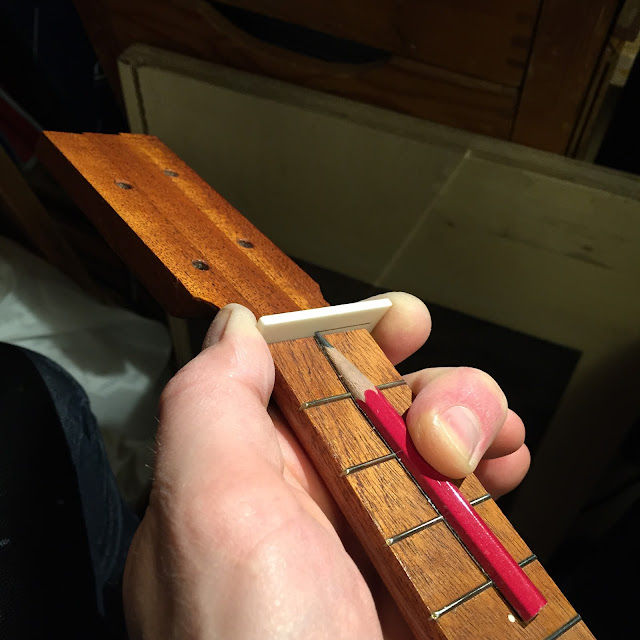Yesterday I took a great, and as it turned out the final, leap forward. Both the reso and the all mahogany soprano are
finished and strung up.
But I did want to make a post about making the saddle for the acoustic soprano. Well the reso is acoustic too but the wooden one then. So here are the pics of that job, the glamour shots and a video demo will come in a bit.
Once the saddle blank fits the slot I draw some lines and go at it with a wee hacksaw. Usually I make the slot to fit a specific bone blank to avoid thinning the blank. That's just tedious. A quick rub down to smoothen the surface is then enough.
The saddle slot is angled on a true Argapa, so the top of the saddle is angled too. The top is parallel to the soundboard so all strings have the same height even if the compensation will leave the C-string slightly longer than the rest.
But looking at it now, the pic doesn't show the angle that well.
And since this is an honest warts and all blog, I won't keep the next pic from the public eye and mind. The bastard blank sort of blew up!
A new blank was called in and cut to length and height. (And sanded to fit the slot that was perfect for the now broken blank but too tight for the new one.)
Height is checked, adjusted and checked again. A few times. Then the positions for the outer strings are marked.
I use Ken Timms' divider to set the location for the holes, and the swoop of the compensated saddle. When I drill the holes I angle them toward the soundhole.
And I made the nut too, check out the half pencil used for getting the approximate height of the string slots.
And the finished nut. I leave a bit more material at the top than you usually see on guitar nuts since it's quite easy to pop a string out when you play Devil music with lots of bends.


















